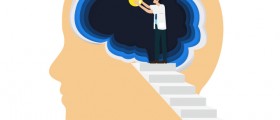
Ecstasy, also known as MDMA – methylenedioxymethamphetamine, or simply “E” or “X”, is a synthetic or designer drug, typically associated with the rave culture of the early 90’s. The street names for this drug vary and include names such as pills, brownies, mandy, Mitsubishis, Rolexs, Dolphins, or XTC. MDMA is forbidden in most parts of the world, and no one is allowed to have it, produce it or sell it. However, there are some very limited exceptions to this rule, since it continues to be used for scientific and medical research. Many experts, especially from the fields of psychology and
cognitive therapy, believe that ecstasy may have significant therapeutic benefits, namely in the treatment of post-traumatic stress disorder and anxiety.
The ecstasy experience
Ecstasy is often used as a recreational drug since it induces euphoria and a pronounced sense of intimacy with others. This drug also chases away feelings of worry, depression and anxiety. First effects of ecstasy typically kick in about half an hour after the consumption, and they tend to last for up to 6 hours, and at least 3 hours. The feeling is usually described as an energy booster where the individual feels alert and alive while experiencing more intensively colors, smells and sounds from the environment. The feeling of love towards the people that are around overwhelms the person on ecstasy. The person will typically be open for communication and very warm.
Therapeutic use of ecstasy
Ecstasy might be useful in various forms of psychotherapy as it helps the individual to dive deep into self-examination while feeling loose and relaxed. Before the ecstasy was made illegal, several prominent therapists used it in their practice, and today they report that most of their patients improved from mild psychiatric disorders. One of the best benefits of therapeutic use of ecstasy is that it improves intimate communication with patients and people close to them. According to these findings, ecstasy may improve the patients’ feelings of empathy or, in other words, their capacity to recognize and share feelings that are experienced by others. This very significant benefit may help to overcome anger, aggression and distress, commonly associated with behavioral problems.
The exact mechanisms of ecstasy are not fully understood but scientists believe ecstasy increases oxytocin levels and ventromedial prefrontal activity, while reducing amygdale activity. It also increases norepinephrine release and circulating cortisol levels, which leads to deeper emotional involvement with the others and improves social communication. However, there is no sufficient evidence to support the use of ecstasy in the general practice, but the investigations on this topic still continue.










_f_280x120.jpg)






Your thoughts on this
Loading...